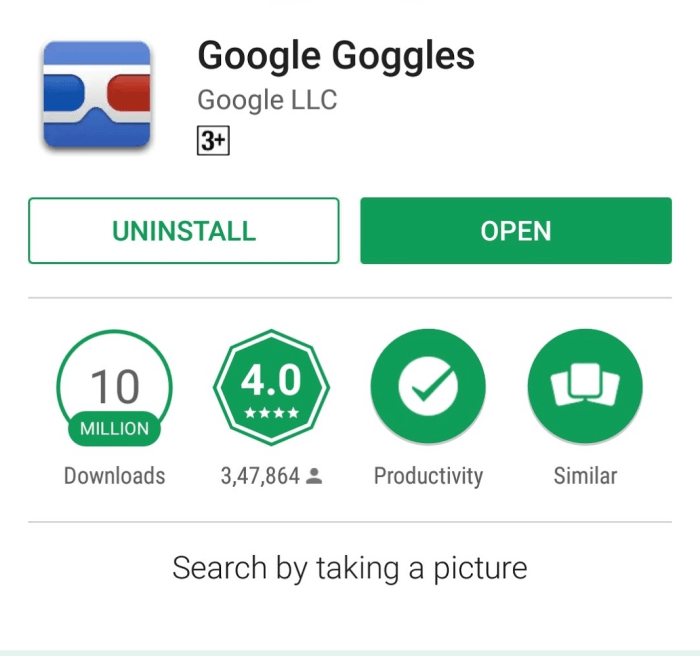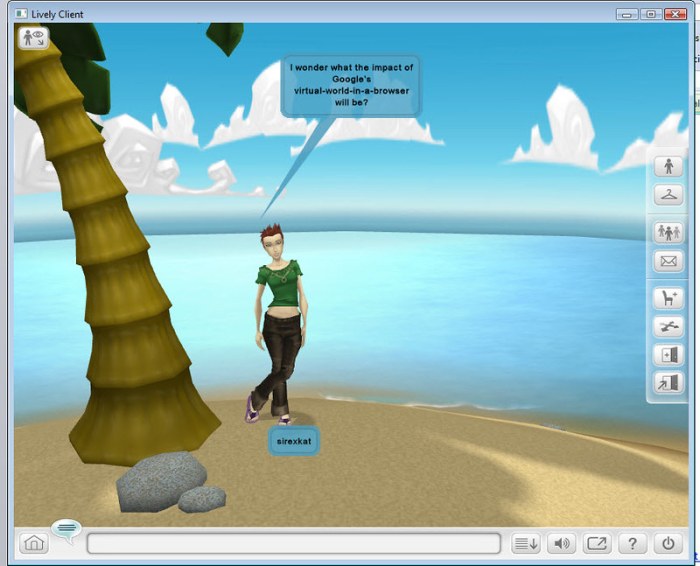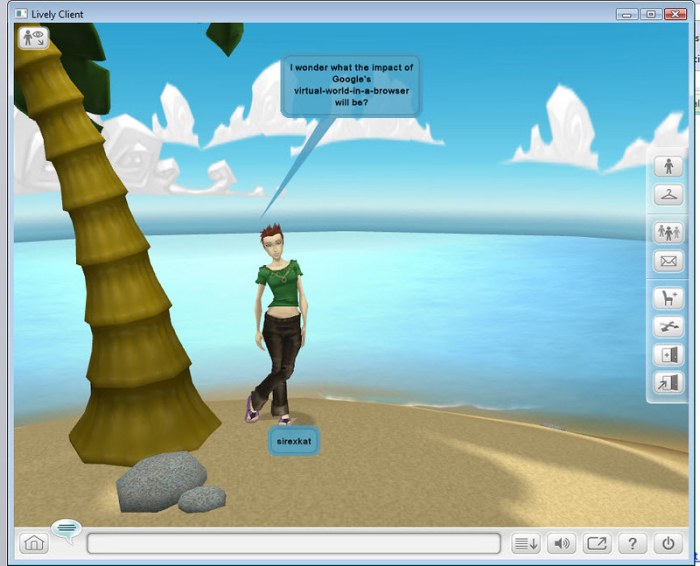Google products that failed, a fascinating look at the company’s missteps. From ambitious projects to innovative ideas that never quite caught on, this exploration dives into the reasons behind these failures, examining market trends, user feedback, and internal factors. We’ll uncover the valuable lessons Google learned from these experiences and how they shaped their future product development strategies.
Prepare to delve into the world of failed tech ventures and the valuable lessons they hold.
This analysis will not only detail the specific products that fell short but also delve into the broader context surrounding their development and launch. We’ll explore the evolving market landscape, competitive pressures, and the role of user feedback in the success or failure of a product. This comprehensive look aims to offer a deeper understanding of Google’s product development process and its successes and failures.
Google’s Unsuccessful Product Portfolio
Google, a behemoth in the tech world, has a rich history of innovation, but not every venture has been a resounding success. Many products, once touted as game-changers, ultimately fell short of expectations. This exploration delves into Google’s unsuccessful product portfolio, examining the reasons behind their failures and the impact on the company’s trajectory.Understanding the reasons behind these failures is crucial for any company, especially one as ambitious as Google.
It allows for valuable insights into market trends, user preferences, and the complexities of product development. These experiences provide lessons that contribute to future successes.
Failed Google Products
This section details Google’s failed products, offering a comprehensive overview of their history, reasons for failure, and their impact on Google.
| Product Name | Launch Year | Reason for Failure | Impact on Google |
|---|---|---|---|
| Google Glass | 2014 | High price point, limited utility, and privacy concerns. Users struggled to find compelling use cases beyond novelty. The initial product was not polished, resulting in mixed reviews and hindering mainstream adoption. | Demonstrated the difficulty in predicting future consumer demand and the need for more rigorous user testing. It also showcased the challenges in creating a product that blends technology and real-world application seamlessly. |
| Google Plus | 2011 | Failed to capture significant user engagement. Its features, while innovative, were not compelling enough to attract users away from established social networks like Facebook. The integration with other Google services was not seamless enough. | Highlighted the importance of understanding the social media landscape and anticipating the evolving needs of users. It also underscored the difficulty in competing with established giants in a fiercely competitive market. |
| Google Reader | 2005 | Google Reader was a pioneering product, but it failed to adapt to evolving user preferences. The rise of specialized and dedicated services like Feedly eventually surpassed Google Reader’s utility. The product’s transition to a more focused and specialized service proved to be too late. | Demonstrated the importance of continuous product evolution and adaptation to changing market demands. It also highlighted the importance of user engagement and retention in a digital ecosystem. |
| Google Wave | 2009 | Google Wave aimed to revolutionize communication but failed to deliver on its promise. Its complex interface and confusing functionality turned off potential users. The product was ahead of its time in terms of its vision but lacked a smooth user experience. | Showcased the challenges in creating innovative products that are both technically advanced and user-friendly. It highlighted the need for clear and concise user interfaces to achieve widespread adoption. |
| Google Buzz | 2011 | Failed to establish itself as a compelling social networking platform. The product struggled to compete with established players in the social media market and did not have a clear differentiation strategy. | Showed the difficulty in creating a new social network in the face of already entrenched platforms. It underscored the need for a strong marketing strategy and a compelling value proposition. |
Analysis of Market Trends and Competition

Google’s unsuccessful product portfolio reveals valuable insights into the dynamic nature of the tech market. Analyzing the competitive landscape during these launches sheds light on the challenges faced and provides lessons for future product development. Understanding the evolving market trends and the strategies of competitors is crucial for understanding why some products failed to capture market share.Market trends and competition often play a significant role in a product’s success or failure.
The evolving needs and preferences of consumers, alongside the emergence of new technologies and market saturation, create a complex interplay that can impact even well-established companies. The competitive landscape, with aggressive rivals and innovative solutions, can make even the most promising ideas challenging to implement successfully.
Google’s had its fair share of flops, hasn’t it? From ill-fated projects to products that just didn’t catch on, understanding user experience is key. That’s where tools like testing tools for mobile ux come in handy. By rigorously testing mobile user interfaces, companies can avoid repeating past mistakes and hopefully ensure their products actually succeed, rather than ending up in the graveyard of forgotten Google projects.
Evolving Market Landscape
The tech market is characterized by rapid innovation and shifts in consumer preferences. Emerging technologies, such as advancements in AI, cloud computing, and mobile computing, often create opportunities for new entrants and reshape the competitive landscape. Google’s unsuccessful products may have failed to anticipate or adapt to these evolving market trends. For example, the failure of Google Glass highlights the challenge of introducing a product that didn’t address a significant user need in a mature market.
This often resulted in products that were ahead of their time or lacked clear value propositions.
Google’s got a history of products that just didn’t catch on, like Google Plus or Google Wave. Understanding why some features become viral sensations, like those discussed in the “recipe of viral features” guide , might offer clues to what went wrong with these past attempts. Perhaps a lack of a clear, compelling use case or a poorly executed marketing strategy were factors behind the failure of these products.
Competitive Pressures
Google faced significant competitive pressures during the launches of its unsuccessful products. Established players and new entrants often introduced competing products with superior features, functionalities, and user experiences. The intense rivalry in the market, particularly in areas like mobile operating systems, search engines, and social media, created an environment where Google’s products had to excel to maintain their market position.
The market is highly competitive, and maintaining a dominant position requires constant innovation and adaptation. Google, as a market leader, is under immense pressure to adapt to the market, introduce innovative products, and anticipate emerging needs.
Google’s Strategies Compared to Competitors, Google products that failed
Google’s strategic approach to product development during the launches of its unsuccessful products can be compared to its competitors. Competitors often focused on specific niche markets, targeting a specific user segment with tailored products. For instance, Apple’s strategy of integrating hardware and software for a seamless user experience was a differentiator, compared to Google’s sometimes more fragmented approach.
Remember Google Plus? A flop, right? It’s fascinating how some tech giants stumble. Sometimes, despite massive resources, products just don’t connect with users. Learning from these failures is crucial, and that’s where understanding how to create custom audiences on Facebook comes in.
create custom audiences facebook strategies can help you target your marketing efforts more effectively. Ultimately, understanding what doesn’t work is just as important as what does, for any successful product launch.
A key difference in competitor strategies was a focus on user-centric design and clear value propositions. Competitors often emphasized user-friendly interfaces, intuitive functionalities, and practical applications, while some of Google’s products lacked a clear user focus.
Innovative Elements of Successful Competitors
Successful competitors often incorporated innovative elements into their products that differentiated them from Google’s unsuccessful offerings. For example, the innovative features and intuitive design of Apple’s products, along with user-centered design principles, have consistently resonated with consumers. The emphasis on seamless integration between hardware and software, along with a consistent design language, contributed to the success of these products.
The approach was centered around a holistic user experience. Successful competitors, like Apple, prioritized the user experience, often through sleek design, seamless integration, and intuitive functionalities. These elements were often missing from some of Google’s unsuccessful products. Successful competitors often focused on specific user needs and developed products that catered to those needs, while Google’s products sometimes lacked a clear target audience or a well-defined value proposition.
Product Development and User Feedback: Google Products That Failed
The development of any product, especially in the competitive tech landscape, is a complex interplay of innovation, market research, and user understanding. Google, despite its vast resources, has had its share of products that failed to capture the user’s imagination or meet their needs. Examining these failures provides valuable lessons about the critical role of user feedback in product development and launch.Understanding user needs and incorporating that understanding into the development process is crucial.
Failing to do so can lead to products that, despite impressive technical capabilities, simply don’t resonate with the target audience. This often results in a product that, while technically sound, ends up gathering dust in the digital ether.
Development Processes of Unsuccessful Products
The development processes behind Google’s unsuccessful products often exhibited a disconnect between the company’s vision and the actual needs of users. Frequently, a product would be driven by internal enthusiasm or perceived market trends rather than a thorough understanding of user pain points and desired functionalities. This often manifested in a product that lacked a clear value proposition or was overly complex, making it difficult for users to grasp the benefits.
Examples include products that were ahead of their time in terms of technology, but failed to offer a compelling user experience. In some instances, the product might have had advanced features that users didn’t need or didn’t know how to use effectively.
Potential User Feedback Missed During Development
A significant contributor to the failure of these products was a lack of proactive and effective user feedback collection. Surveys, usability testing, and direct communication channels, such as online forums and support tickets, might have revealed critical issues with the product’s design or functionality. User feedback is a treasure trove of information about what works and what doesn’t, and neglecting to collect it can lead to products that don’t meet user needs.
Market Research and User Testing Contributions to Failures
The effectiveness of market research and user testing was often insufficient. Sometimes, the research was superficial, failing to delve deep into user motivations and needs. User testing sessions might have been too short or poorly designed, missing crucial insights into user behavior and frustrations. In other cases, the research might have focused on the wrong user segment or used inaccurate data collection methods.
For instance, a product targeting a niche market might not have adequately considered the needs of the broader user base, leading to a limited appeal. Similarly, a survey with a small sample size or biased questions would not accurately represent the target audience.
Role of User Feedback in Product Development and Launch
User feedback plays a critical role in the successful development and launch of any product. It acts as a compass, guiding the product development team toward features that resonate with users and away from those that cause frustration. Active and continuous feedback loops are essential for creating products that users love.
Importance of Understanding User Needs
Ultimately, the key to successful product development lies in a deep understanding of user needs. This includes understanding the user’s context, motivations, and pain points. Products that prioritize user needs are more likely to be successful, even in a highly competitive market. This is not merely about functionality, but also about the overall user experience. For example, a simple and intuitive interface can significantly enhance the user experience and increase adoption rates.
Internal Factors Contributing to Failure

Google, despite its impressive track record, has faced setbacks with certain product launches. Analyzing these failures reveals critical insights into the internal dynamics that can hinder even the most innovative ideas. Understanding these factors is crucial for future product development, allowing Google to learn from past mistakes and refine its internal processes.Internal factors, often overlooked in initial analyses, play a significant role in product success or failure.
These factors encompass organizational structures, resource allocation, team dynamics, and the overall development process. Sometimes, a seemingly minor internal issue can cascade into significant problems, impacting the product’s viability and ultimately leading to its demise.
Resource Constraints During Development
Internal resource constraints, such as budget limitations, time pressures, and inadequate personnel, can hinder product development. Insufficient funding can lead to delays, reduced features, and a compromised user experience. Similarly, tight deadlines can force teams to cut corners, potentially sacrificing quality and functionality. Furthermore, a lack of specialized personnel with the necessary expertise can result in flawed designs and subpar implementations.
- Budget limitations often force teams to prioritize features, potentially leading to a product that lacks crucial functionalities, resulting in user dissatisfaction. For example, a project might have been allocated a budget insufficient to cover the development of essential user interface elements, leading to a clunky and inefficient user experience.
- Time constraints can cause rushed development cycles, potentially compromising the quality of the product and overlooking crucial user feedback. This can lead to a product that fails to meet market needs or user expectations. A product rushed to market without proper testing may have significant bugs or usability issues, leading to negative reviews and decreased adoption.
- Insufficient technical expertise or the absence of specific skillsets within a development team can result in products that do not meet technical requirements or are not optimized for the target audience. This can lead to poor performance, usability issues, and difficulties in scaling the product.
Internal Conflicts and Disagreements
Disagreements and conflicts within development teams can significantly impact a product’s success. Differing opinions on design, functionality, and priorities can lead to internal conflicts, slowing down development and hindering collaboration. This can manifest in various ways, such as disagreements on the product’s direction, conflicting opinions on the best implementation strategies, and issues with communication and feedback loops.
- Differing opinions on the product’s design, functionality, and priorities can lead to internal conflicts and stalled development, ultimately affecting the final product’s quality. This can result in a product that is not aligned with user needs or market demands, hindering its potential for success.
- Conflicting opinions on implementation strategies and approaches can lead to inconsistent designs and features. This can result in a product that is difficult to use or understand, hindering user adoption.
- Inadequate communication and feedback loops between team members can lead to a lack of clarity, hindering the team’s ability to address issues effectively. This can lead to a product with unanticipated flaws and issues that are not identified until after the product launch, negatively impacting user experience.
Impact of Internal Processes
Google’s internal processes, including its development methodologies, approval systems, and communication channels, significantly impact the product development cycle. Inefficient processes can lead to delays, errors, and ultimately, product failure. Complex approval systems can slow down the development process, while inadequate communication channels can lead to misunderstandings and errors.
- Inefficient development methodologies, such as a lack of clear processes or insufficient iteration cycles, can result in a product that does not effectively address user needs or market demands. This can manifest as a product that is difficult to use, lacks functionality, or does not meet user expectations.
- Rigorous and complex approval processes can significantly slow down the development cycle, hindering the ability to adapt to changing market conditions or user feedback. This can lead to a product that is outdated or does not meet contemporary market demands.
- Lack of efficient communication channels between different teams involved in the product’s development can lead to miscommunication and errors, potentially resulting in a product that does not meet quality standards.
Internal Resources and Expertise Comparison
| Factor | Successful Product Lines | Unsuccessful Product Lines |
|---|---|---|
| Budget Allocation | Adequate funding, allowing for comprehensive development and testing. | Insufficient funding, leading to compromises in features and quality. |
| Team Expertise | Specialized personnel with the necessary skillsets for the project. | Lack of specific expertise, leading to flawed designs and implementations. |
| Development Methodology | Agile or iterative development approaches, allowing for adaptability and frequent feedback loops. | Linear or rigid development methodologies, hindering flexibility and responsiveness to market changes. |
| Internal Communication | Clear and efficient communication channels, enabling seamless collaboration and issue resolution. | Inefficient communication, leading to misinterpretations and delays. |
Lessons Learned from Past Failures
Google’s journey is marked not only by groundbreaking innovations but also by the inevitable setbacks of product development. Analyzing these failures reveals crucial insights into the complexities of the tech industry and provides a roadmap for future success. Understanding the pitfalls allows Google to refine its approach, anticipate challenges, and ultimately create more robust and user-friendly products.
Recurring Patterns in Product Failures
Google’s past failures, though varied in their specific details, often exhibit common traits. These include a disconnect between user needs and product design, a lack of comprehensive market research, and insufficient internal communication and collaboration. Ignoring or underestimating competition also appears as a recurring theme. The company has, at times, underestimated the capabilities of its competitors and the rapid evolution of the market.
The challenges in balancing innovation with practicality and user adoption are also highlighted.
Actionable Insights from Failed Products
A critical lesson from Google’s unsuccessful ventures is the importance of thorough market research and user feedback. This involves actively engaging with potential users throughout the product lifecycle. Conducting user testing and gathering data at every stage ensures the product is aligned with user expectations. Furthermore, iterative development cycles, where products are continuously refined based on user feedback, are essential for success.
A robust internal communication strategy, fostering collaboration between teams, is equally crucial. Clear communication channels and well-defined roles help ensure that product development is aligned with the company’s overall goals.
Impact on Future Product Development
Google’s approach to product development has evolved significantly as a result of past failures. The company now prioritizes user-centric design, incorporating user feedback throughout the development process. This is exemplified by the rise of design sprints and iterative development cycles. Market research and competitive analysis are now considered integral parts of any new product initiative. A culture of transparency and open communication is encouraged, enabling teams to share insights and learn from each other’s experiences.
In addition, Google actively seeks diverse perspectives to ensure a comprehensive understanding of the user base. This commitment to learning from past mistakes is reflected in Google’s commitment to continuous improvement and adaptation.
Key Lessons Summarized
- Prioritize user-centric design: Conduct thorough user research and gather feedback at every stage of development. This involves iterative design cycles, continuous improvement, and the implementation of user feedback loops. The goal is to ensure that the product aligns with user expectations and needs.
- Robust market research and competitive analysis: Understand the competitive landscape, identify market trends, and assess potential user needs. Market research should encompass diverse user groups and provide a clear understanding of potential market size and growth potential.
- Iterative development cycles: Embrace agile methodologies and iterative development processes. This allows for continuous refinement based on user feedback, ensuring the product remains relevant and meets evolving user needs. The product development cycle should incorporate feedback loops to incorporate user suggestions.
- Foster internal communication and collaboration: Encourage open communication and collaboration between teams. Establish clear communication channels and foster a culture of knowledge sharing. The goal is to ensure that all teams are working towards common goals and aligned with company vision.
- Embrace diversity in perspectives: Incorporate diverse perspectives and experiences into the product development process. This leads to a more holistic understanding of the user base and improves the likelihood of product success. The product team should consist of individuals with varied backgrounds and expertise.
Case Studies of Specific Products
Google’s journey is marked by both resounding successes and surprising failures. Analyzing these missteps provides valuable insights into the complex interplay of market forces, internal dynamics, and user expectations that can derail even the most ambitious projects. Understanding these failures can inform future product development, fostering a more robust approach to innovation and user needs.
Google Glass
Google Glass, a wearable computer, aimed to revolutionize how we interact with technology. The concept, presented as a stylish, hands-free computing device, captured public imagination, albeit briefly.
History, Development, and Launch: Google Glass emerged from an internal research and development project. Early prototypes showcased a vision of seamless integration of information and communication, promising to overlay digital data onto the real world. The initial launch focused on developers and early adopters, with subsequent iterations designed to appeal to a wider audience. The initial public release featured a sleek, futuristic design, but also a somewhat bulky form factor and limited functionality.
Factors Leading to Failure: Several key factors contributed to Google Glass’s demise. One major obstacle was the device’s perceived awkwardness and impracticality in everyday use. The bulky design, combined with the limited functionalities available at launch, hindered its adoption. Moreover, the lack of compelling applications and a clear user value proposition played a crucial role. The initial price point also proved a significant hurdle, making it inaccessible to a large portion of the target market.
User privacy concerns, especially the potential for passive data collection, also contributed to a negative perception and limited adoption.
Impact on Google’s Reputation and Market Position: The failure of Google Glass did not severely damage Google’s overall reputation or market position. However, it served as a reminder that technological innovation must be accompanied by a genuine user need and a clear value proposition. The experience offered a valuable learning opportunity, demonstrating the importance of meticulous market research and user feedback throughout the development process.
While not a total failure in terms of overall strategy, it highlighted the need for careful consideration of practicality and utility.
Product Evolution and Key Milestones:
- Early Prototypes (2012): Sleek, futuristic design, emphasizing hands-free computing, and integration of information into the real world. Visuals: The early prototypes featured a large, rectangular display mounted on a pair of glasses. The interface was designed to display information as overlays on the user’s field of vision.
- Initial Public Release (2014): Sleek, but bulky design. Limited functionalities. Visuals: The glasses resembled modern eyeglasses with a small display embedded in the frame. The user interface focused on providing information through overlays on the user’s view.
- Developer Focus (2014-2015): Targeted primarily at developers, offering opportunities for application development. Visuals: The display and form factor remained consistent with the previous release. The key visual change was the emphasis on developer tools and platforms to support app development.
- Limited Commercial Success (2015-2017): Struggled to gain mainstream adoption. Visuals: The glasses maintained their basic design, but with the addition of subtle improvements based on user feedback. However, these updates failed to address the key issues of practicality and usability.
- Discontinuation (2017): The project was ultimately discontinued, marking a significant failure in Google’s product portfolio. Visuals: The glasses maintained the same visual characteristics as the previous versions. However, there was no longer a significant presence of the product.
Wrap-Up
In conclusion, Google’s journey is a testament to the ever-evolving nature of the tech industry. While some products falter, others succeed, and valuable lessons are learned along the way. This examination of Google’s unsuccessful products provides a clear insight into the complex interplay of market forces, user needs, and internal factors that shape a company’s trajectory. The insights gained from these failures offer a roadmap for future product development, highlighting the importance of thorough market research, effective user feedback mechanisms, and a robust internal process.








